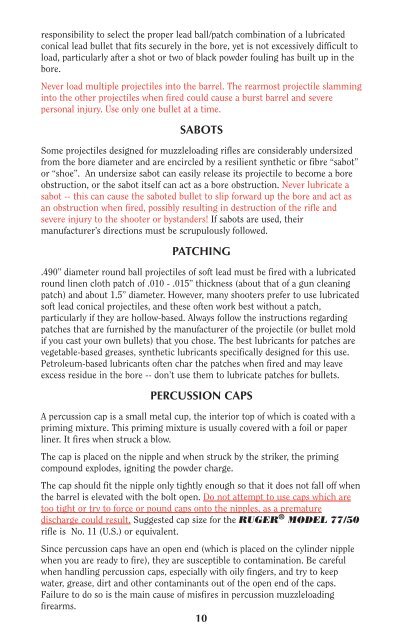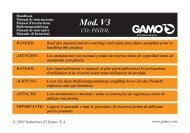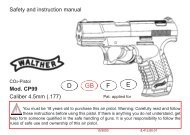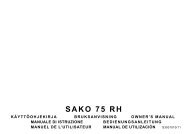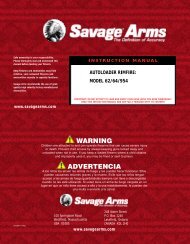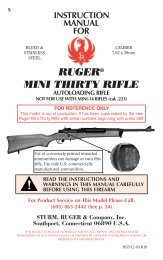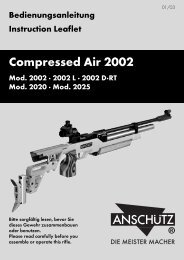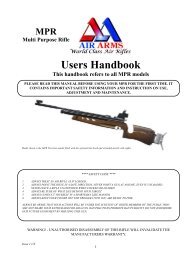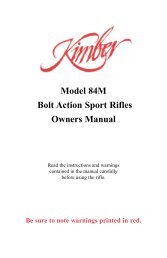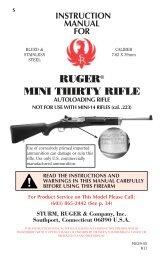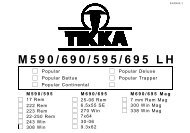Ruger Model 77/50
Ruger Model 77/50
Ruger Model 77/50
Create successful ePaper yourself
Turn your PDF publications into a flip-book with our unique Google optimized e-Paper software.
esponsibility to select the proper lead ball/patch combination of a lubricatedconical lead bullet that fits securely in the bore, yet is not excessively difficult toload, particularly after a shot or two of black powder fouling has built up in thebore.Never load multiple projectiles into the barrel. The rearmost projectile slamminginto the other projectiles when fired could cause a burst barrel and severepersonal injury. Use only one bullet at a time.SABOTSSome projectiles designed for muzzleloading rifles are considerably undersizedfrom the bore diameter and are encircled by a resilient synthetic or fibre “sabot”or “shoe”. An undersize sabot can easily release its projectile to become a boreobstruction, or the sabot itself can act as a bore obstruction. Never lubricate asabot -- this can cause the saboted bullet to slip forward up the bore and act asan obstruction when fired, possibly resulting in destruction of the rifle andsevere injury to the shooter or bystanders! If sabots are used, theirmanufacturer’s directions must be scrupulously followed.PATCHING.490” diameter round ball projectiles of soft lead must be fired with a lubricatedround linen cloth patch of .010 - .015” thickness (about that of a gun cleaningpatch) and about 1.5” diameter. However, many shooters prefer to use lubricatedsoft lead conical projectiles, and these often work best without a patch,particularly if they are hollow-based. Always follow the instructions regardingpatches that are furnished by the manufacturer of the projectile (or bullet moldif you cast your own bullets) that you chose. The best lubricants for patches arevegetable-based greases, synthetic lubricants specifically designed for this use.Petroleum-based lubricants often char the patches when fired and may leaveexcess residue in the bore -- don’t use them to lubricate patches for bullets.PERCUSSION CAPSA percussion cap is a small metal cup, the interior top of which is coated with apriming mixture. This priming mixture is usually covered with a foil or paperliner. It fires when struck a blow.The cap is placed on the nipple and when struck by the striker, the primingcompound explodes, igniting the powder charge.The cap should fit the nipple only tightly enough so that it does not fall off whenthe barrel is elevated with the bolt open. Do not attempt to use caps which aretoo tight or try to force or pound caps onto the nipples, as a prematuredischarge could result. Suggested cap size for the RUGER ® MODEL <strong>77</strong>/<strong>50</strong>rifle is No. 11 (U.S.) or equivalent.Since percussion caps have an open end (which is placed on the cylinder nipplewhen you are ready to fire), they are susceptible to contamination. Be carefulwhen handling percussion caps, especially with oily fingers, and try to keepwater, grease, dirt and other contaminants out of the open end of the caps.Failure to do so is the main cause of misfires in percussion muzzleloadingfirearms.10


